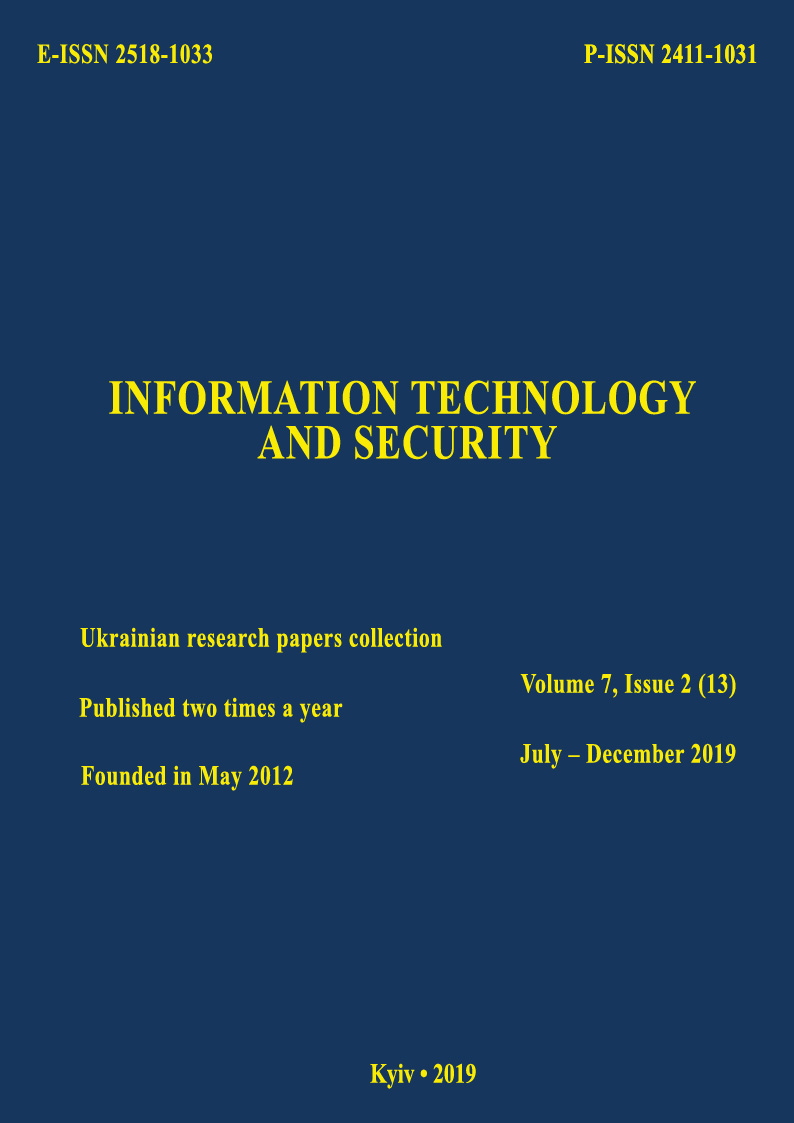Methods of counteracting social engineering
DOI:
https://doi.org/10.20535/2411-1031.2019.7.2.190563Keywords:
Social engineering, social engineering counteracting, protection method, instrumentation, testing for penetration, staff recognition.Abstract
Methods of counteracting the use of social engineering are analyzed. Relevant tools, for example, Social-Engineer Toolkit, Social Engineering Defensive Framework, Social Engineering Optimizer, Kali Linux, have been considered as examples of their practical implementation. Among the methods analyzed, penetration testing is highlighted. This method of counteraction is focused on identifying and preventing the exploitation of human (employee, client) vulnerabilities. Human vulnerability testing for penetration testing is done using the Social-Engineer Toolkit and Kali Linux, Cogni-Sense. Each of these tools is focused on the implementation of threats to social engineering. In this case, the Social-Engineer Toolkit can be used individually or as part of Kali Linux. At the same time the method of raising awareness of employees and customers is considered. To do this, he is trained on the likely scenarios of social engineering attacks. As a result of such training, technologies and policies for counteracting socio-engineering influence are being improved. In practice, the method is implemented as the Social Engineering Defensive Framework. At the same time, there are two aspects of counteracting the use of social engineering: the subject (the attacker), the object (the protector) of socio-engineering influence. This method can counteract the use of social engineering by considering likely actions by the attacker. It is considered that the sequence of its actions is determined solely in view of the attack scenarios of social engineering. This method allows each action to counteract and, consequently, prevent the realization of threats to the use of social engineering. This method is practically implemented by the tool Social Engineering Optimizer. In addition, the method of identifying and reporting to employees (clients) about the use of social engineering is considered. Its practical application of Cogni-Sense is focused on the interpretation of humans as a sensor that responds to socio-engineering impact. Thus, the analysis of counteracting methods for the use of social engineering will allow, first, to consider their advantages and disadvantages to prevent the realization of threats of socio-engineering influence; second, to develop appropriate models, methods and tools to overcome the shortcomings of known solutions.References
V. Mokhor, O. Bohdanov, О. Kylovyi, Guidelines for cybersecurity (ISO/IEC 27032:2012). Kyiv, Ukraine: OOO “Try-K”, 2013.
V.V. Mokhor, O.V. Tsurkan, R.P. Herasymov, and V.V. Tsurkan, “Information Security Assessment of Computer Systems by Socio-engineering Approach”, Selected Papers of the XVII International Scientific and Practical Conference “Information Technologies and Security”. Kyiv, 2017. P. 92-98. [Online]. Available: http://ceur-ws.org/Vol-2067/paper13.pdf. Accessed on: June 11, 2019.
Analysis of the Cyber Attack on the Ukrainian Power Grid. [Online]. Available: https://ics.sans.org/media/E-ISAC_SANS_Ukraine_DUC_5.pdf. Accessed on: June 11, 2019.
M. Edwards, R. Larson, B. Green, A. Rashid, and A. Baron, “Panning for gold: Automatically analyzing online social engineering attack surfaces”, Computers & Security, vol. 69, pp. 18-34, 2017, doi: /10.1016/j.cose.2016.12.013.
Fathollahi-Fard Mohammad Amir, Hajiaghaei-Keshteli Mostafa, and Tavakkoli-Moghaddam Reza, ”The Social Engineering Optimizer (SEO)”, Engineering Applications of Artificial Intelligence, vol. 72, pp. 267-293, 2018, doi: 10.1016/j.engappai.2018.04.009.
F. Mouton, L. Leenen, and H. Vente, “Social engineering attack examples, templates and scenarios”, Computers & Security, vol. 59, pp. 186-209, 2016, doi: 10.1016/j.cose.2016.03.004.
P. Engebretson, The Basics of Hacking and Penetration Testing. thical Hacking and Penetration Testing Made Easy, 2013, doi: 10.1016/C2013-0-00019-9.
R. Heartfield, and G. Loukas, “Detecting semantic social engineering attacks with the weakest link: Implementation and empirical evaluation of a human-as-a-security-sensor framework”. Computers & Security, vol. 76, pp. 101–127, 2018,doi:10.1016/j.cose.2018.02.020.
V. Thomas, Building an Information Security Awareness Program, 2014, doi:10.1016/b978-0-12-419967-5.00007-7
I. Ghafir, V. Prenosil, A. Alhejailan, and M. Hammoudeh, “Social Engineering Attack Strategies and Defence Approaches”, in Proc. IEEE 4th International Conference on Future Internet of Things and Cloud, Vienna, 2016, pp. 145-149, doi: 10.1109/FiCloud.2016.28.
K. Krombholz, H. Hobel, M. Huber, and E. Weippl, “Advanced social engineering attacks”, Journal of information security and applications, pp. 1-10, 2014, doi: 10.1016/j.jisa.2014. 09.005.
Downloads
How to Cite
Issue
Section
License
Copyright (c) 2020 Collection "Information technology and security"

This work is licensed under a Creative Commons Attribution 4.0 International License.
The authors that are published in this collection, agree to the following terms:
- The authors reserve the right to authorship of their work and pass the collection right of first publication this work is licensed under the Creative Commons Attribution License, which allows others to freely distribute the published work with the obligatory reference to the authors of the original work and the first publication of the work in this collection.
- The authors have the right to conclude an agreement on exclusive distribution of the work in the form in which it was published this anthology (for example, to place the work in a digital repository institution or to publish in the structure of the monograph), provided that references to the first publication of the work in this collection.
- Policy of the journal allows and encourages the placement of authors on the Internet (for example, in storage facilities or on personal web sites) the manuscript of the work, prior to the submission of the manuscript to the editor, and during its editorial processing, as it contributes to productive scientific discussion and positive effect on the efficiency and dynamics of citations of published work (see The Effect of Open Access).

